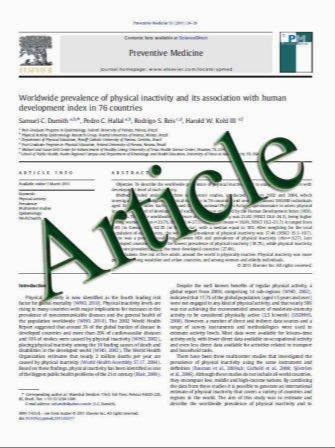Clinicopathologic and molecular significance of phospho-Akt expression in early invasive breast cancer
- نوع فایل : کتاب
- زبان : انگلیسی
- مؤلف : Mohammed A. Aleskandarany Emad A. Rakha Mohamed A. Ahmed Desmond G. Powe Ian O. Ellis Andrew R. Green
- چاپ و سال / کشور: 2010
Description
Akt/PKB serine/threonine kinase is a leading signalling modulator for several cellular processes including metabolism, growth, proliferation and survival. However, complexity and diversity in the upstream/downstream arms of Akt pathway, as recent genetic studies reported, challenge considerably the evolvement of effective targeted therapies. The aim was to study the expression of phospho- Akt1 (pAkt) in breast cancer (BC), with respect to different component proteins upstream/downstream of Akt pathway activation, clinicopathologic parameters and patients’ outcome. pAkt (Ser473) was evaluated by immunohistochemistry, on tissue microarrays containing 1,202 early invasive BC with long-term clinical follow-up. Seventy-six percent of the studied tumours overexpressed pAkt, where it was associated with expression of oestrogen and androgen receptors, PIK3CA, cytokeratin (CK)18, CK19 and PTEN. Loss of pAkt was correlated with high grade, CK5/6, p53 and high Ki67 labelling index. Higher proportions of luminal tumours were pAkt positive relative to triple negative/basal subtypes. However, pAkt overexpression was not associated with breast cancer specific (BCSS) or metastasis-free survival (MFS). Four tumour phenotypes were identified based on PIK3CA and pAkt expression, with substantial proportions being PIK3CA-/pAkt? or PIK3CA?/pAkt-. These four combinatorial phenotypes were significantly associated with BCSS (p = 0.001) and MFS (p = 0.002). Although pAKT is an oncogene correlated with poor prognostic variables, it was not a prognostic marker. Combinatorial phenotypic groups of PIK3CA/pAkt denoted functional complexity, at translational level, within the upstream and downstream arms of Akt activation with significant impact on patients’ outcome. These findings may help development more adequate therapeutic regimens for specific subgroups of this key cancer pathway.
Breast Cancer Res Treat (2011) 127:407–416 Received: 19 June 2010 / Accepted: 22 June 2010 / Published online: 9 July 2010 Springer Science+Business Media, LLC. 2010


